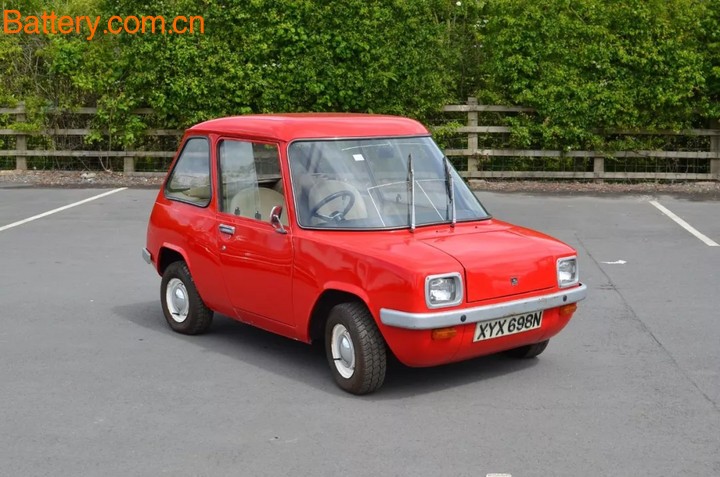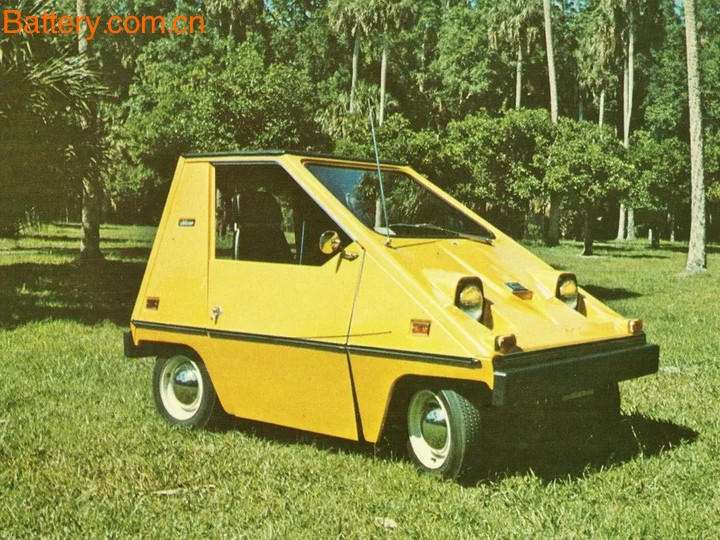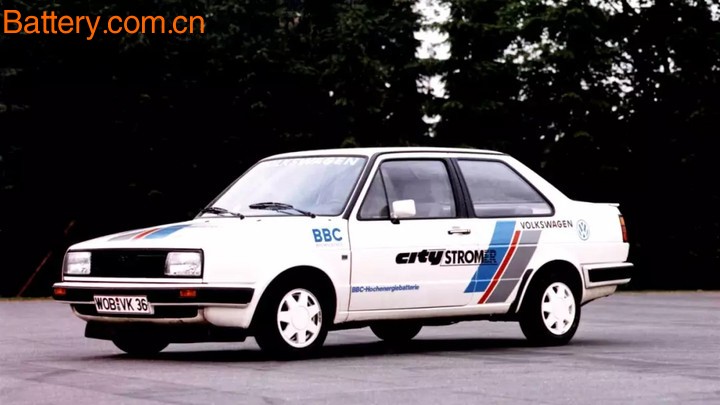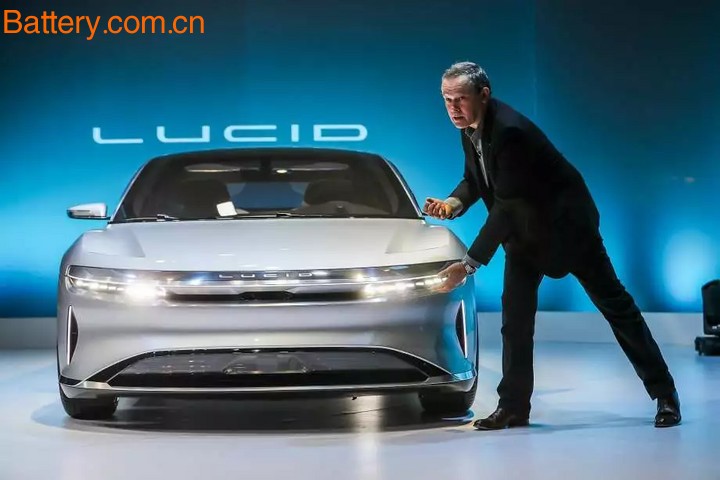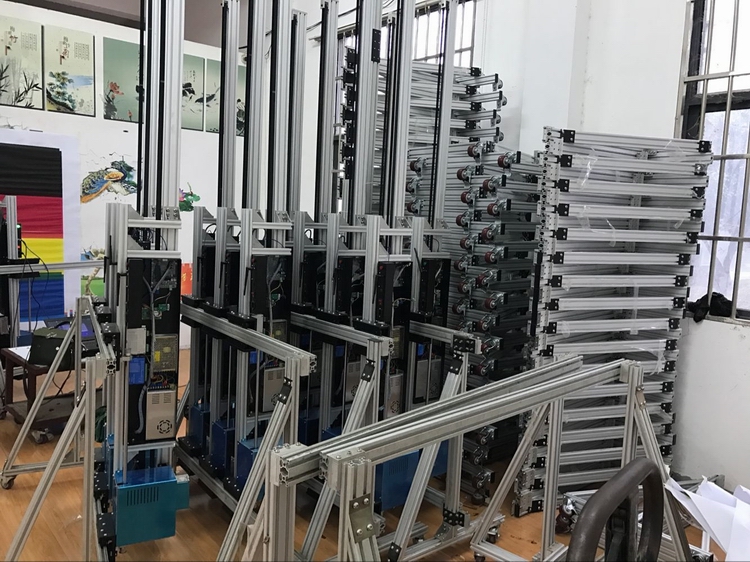The stunning appearance of the Beiteng concept car is the first shot of the 2018 new car company. So that Jia Yueting's FF91 is eclipsed. I can't help but sigh: This year, even the car is playing a full screen? In this year, with the help of Internet companies and capital, the emerging car companies are really stunned: a variety of display concept cars, all kinds of intelligent, various ecological, various delivery within two years, all kinds of Land, all kinds of factories, all kinds of digging wall feet from traditional enterprises, all kinds of feet from Tesla... Is it true that the automobile industry, which has been in development for more than 100 years, has really suffered a turning point in the times? Moreover, Chinese people who do not have the core technology are still the leaders of this turning point? To study this subject, we must start with the history of electric vehicles. . . . 1 Today's car-making movements are large in scale, many participants, and dazzling in concept, which are familiar in the history of the entire automobile industry. For example, the United States, the world's largest automobile consumer, has had more than 1,800 car brands in the United States from 1894 to 1930. Moreover, a large part of these car brands are electric cars and steam locomotives. In the early days of automobile development, diesel locomotives, electric vehicles and steam locomotives were in the world. Steam locomotives were quickly eliminated due to inefficiency. Due to the breakthrough in technology and the improvement of efficiency, the diesel locomotive has stood out and swallowed the market share of electric vehicles and became an absolutely dominant technical route. Nowadays IT is rushing to buy Tesla, like the famous people such as Edison at the time to buy electric cars. However, in terms of efficiency and performance, the development of electric vehicles at that time was sluggish and seriously lags behind the progress of internal combustion engines. This led to the decline of electric vehicles. In fact, until the beginning of the 20th century, electric vehicles still have a large market. Diesel locomotives can be popularized, benefiting from two points: longer cruising range and faster fuel replenishment speed. As the oil industry is booming, the gas station has expanded rapidly, making the internal combustion engine even more powerful. People were forced to accept the shortcomings of the diesel locomotive that was noisy and required mechanical maintenance. In the later half century, electric cars were driven into the cold. It can be said that from the 1930s to the end of the 20th century, it was the golden age of internal combustion engines. The development of electric vehicles is lagging behind, but it is not completely stagnant. Volkswagen, Fiat, Renault, Skoda, Citroen, General Motors, Toyota, Honda, Nissan and other brands have launched pure electric models, but most of them are A00, A0, and A-class cars, and the price is very expensive. 2 The first wave of electric cars took place in the 1970s, when the iconic event was the arrival of the first oil crisis. Thus, in the 1970s and 1990s, several independent electric vehicle companies were born around the world. For example, Enfield Automotive in the UK introduced the Enfield 8000, which has a 6kW motor and an aluminum body with a cruising range of around 50km. Enfield 8000 Zagato, a well-known Italian design company, also launched a two-door A00-class car Zele with a battery life of 80km, based on Fiat's technology platform. The car has produced about 500 units. Another independent electric vehicle company that has to be mentioned is Sebring-Vanguard. The CitiCar produced by the company is the highest-produced electric vehicle in the United States since the end of World War II in 1945, producing a total of 4,444 vehicles. As of 1976, Sebring-Vanguard became the sixth largest auto company in the United States at the time of production. Today, CitiCar's production record is surpassed by Tesla Model S. CitiCar The occurrence of the oil crisis has also promoted the pace of production of electric vehicles by traditional car companies. In 1984, Volkswagen co-developed a model with the German electric company RWE, named CitySTROMER, which lasted 50km and was sold for about $34,000. This car is based on the second generation of golf transformation. At the same time, Volkswagen also launched the CitySTROMER electric car based on the Jetta model, priced at 37,000 US dollars. The car has two battery options, one is a lead-acid battery and the other is a sodium-sulfur battery. The version of the sodium-sulfur battery is equipped with a maximum of 250km. Jetta CitySTROMER In fact, Volkswagen also designed the second generation of this car, called Bora Eletric, and adopted lithium battery technology. However, due to the high cost, it was not mass produced. The Jetta CtiySTROMER has been discontinued since 1987. In the 1990s, the California Air Quality Council (CARB) promoted the second wave of electric vehicles. This time the power was not an oil crisis but environmental protection. In the US market, GM, Toyota, Honda, and Nissan have all released electric vehicles based on lead-acid batteries and nickel-metal hydride batteries, but they are mainly lease-based and are not sold as models for the general public. 3 The model that truly breaks through the miniaturization of electric vehicles is the Altra that Nissan launched in 1998. It is no longer limited to the A00, A0 or A-class models, but a wheelbase of 2800mm. SUV. The car is based on the transformation of Nissan R'nessa, equipped with a power lithium battery provided by Sony, with a cruising range of 230km. Nissan Altra Nissan Altra is the world's first production car equipped with lithium battery technology. It was discontinued in 2001 and produced about 200 units. The R'nessa mentioned above was strictly not a SUV model at the time, but its successor is familiar to everyone, that is Nissan Murano (domestic called "Lou Lan"). It should be said that the second wave of electric vehicles since the 1990s has laid the foundation for today's car-making campaign. One of the big boosters is the commercial application of lithium battery technology since the 1990s. As we all know, from the 1990s to the present, the notebook computer, PDA, mobile phone industry has developed rapidly. Mobile computing is possible, in addition to the advancement of the semiconductor industry, lithium battery technology can not be ignored. In 2001, lithium nickel cobalt magnesium oxide (NMC) batteries were introduced, which is also known as the ternary battery. At present, ternary batteries are mainly divided into three types: nickel-cobalt lithium magnesiumate, nickel-cobalt-manganate and nickel-cobalt lithium aluminate. The Panasonic 18650 battery used by Tesla uses a nickel-cobalt lithium aluminate (NCA) battery. Rechargeable lithium-ion batteries have made a significant contribution to the realization of mobile computing. The lithium-ion battery in the cylinder is used in the notebook computer, and the tablet-shaped soft-pack battery is used in the mobile phone. In the field of electric vehicles, it is mainly based on square aluminum battery batteries with large volume and good safety. Prior to the advent of Tesla, the 18650, the most popular type of cylindrical lithium battery, has been widely used in electric bicycles. The electric bicycle is the first vehicle to use a cylindrical lithium battery as a power battery. What Tesla did was to make a bigger battery pack - big enough to make a car run more than 300km. In the 21st century, with the development of lithium battery technology and the strict restrictions on exhaust emissions from various countries, the wave of the third wave of electric vehicles has arisen. Tesla is just a lucky one in this wave. Several other electric car companies in the same period as Tesla have been killed: Aptera, Coda, Corbin, Batter Place, Fisker, Li-Ion Motors, etc... But after the waves push the waves. Today, in addition to Wei Lai, Faraday Future, Lucid Motors, and some of the new domestic car companies, international players such as Rivian, Proterra, Karma Automotive, and Detroit Electric are poised for growth. Among them, Wei Lai's products look more mature and mature, leaving a reliable impression. But who is the second Tesla? I think the most likely are Faraday Future and Lucid Motors. These two companies are actually founded by some car companies and former employees of Tesla. They are closest to Tesla on the technical route, and the tonality is relatively consistent. As for FF, there is no need to look at it because of the existence of Jia Yueting. This company has a lot of money as long as the funds are in place. Although it has a lot of negative news, I think it is more reliable to look at it with a developmental perspective. My personal preference is Lucid Motors, the predecessor of Atieva, who was founded in 2007 by former Vice President Tesla and has been developing electric systems and batteries. BAIC had previously held the company and later withdrew from the founding team; Jia Yueting also invested in Lucid Motors, but Jia was a very strong control person, so he gave up the company and invested in FF. It is said that Jia Yueting has sold his shares in Lucid Motors (unconfirmed). At present, many consortia including Ford want to acquire Lucid Motors, but based on the current situation, the founding team is more likely to want to start their own business. I have three reasons for optimistic about Lucid Motors: 1. The founding team is stable and reliable; the founder is the chief engineer of Model S before; unlike FF, there are frequent major personnel changes; 2. The technical route is highly similar to Tesla; Pricing is reasonable ($60,000), focusing on power and quality, rather than focusing on autonomous driving (of course, Lucid Air also has autonomous driving) and some bells and whistles such as zero-gravity seats. Speaking of the price, the most reliable is the Lucid Air, which is more than the $1,200,000 "high price" of the FF 91, but it is not like some domestic companies that "greet" the market. Weilai ES8 400,000 price, there is still a margin of space, because the car itself does not integrate too much avant-garde technology; but the car with a 50-inch large screen, said to sell 300,000 before the subsidy, The ingredients that boast are great. Even DMC, the president of FMC, said, "In terms of current battery costs, it is not easy to achieve such a price." Although the concept car of Beitton looks amazing, its quality is difficult to control from the perspective of production technology. There is currently no production car equipped with such a car-level screen. The background of Bi Fukang and Dai Lei’s international companies cannot be endorsed for the quality and price of this car. I always think that for Weilai, Weimar and Baiteng, you can either do less than 200,000 scooters or do more than 800,000 luxury electric cars. Making a 400,000 car seems to be cost-effective, but it is very embarrassing. Because of the cost of this price, it is impossible to give the vehicle a clear advantage over Tesla. 5 The accidental success of Tesla triggered this car-making movement, giving people the illusion of a turning point in the times. The chief culprit of this illusion is the so-called intelligence. Why do new automakers now have to advertise themselves as smart cars? This is because traditional diesel engine power (including hybrid power) has high technical and patent barriers, and new car companies cannot get involved. Because of the simple technical principle and mature solution, the pure electric vehicle has greatly reduced the threshold for building a car. However, in this way, the homogenization of each brand in the basic performance of the vehicle is more serious, there is no significant difference. Therefore, the car company must focus on things other than the powertrain, such as large screens, such as seats, such as artificial intelligence, such as automatic driving... In these respects, it is easy to differentiate and it is easy to make a selling point. These advanced features are achievable in time and money. In other words, I think that from the perspective of electric vehicles, manufacturing costs are still high. To convince consumers to spend hundreds of thousands or even millions to buy a new brand, it is necessary to add a variety of intelligent design to make up for the brand's popularity. This is Tesla's trick. As a new brand, although Tesla has achieved breakthroughs in cruising range, it has added a variety of cool selling points to attract consumers, such as the Eagle Wing, Autopilot and so on. The purpose is to increase the premium of the vehicle and make up for the weakness of the brand. 6 Tesla’s “disciples†are promoting autopilots without exception. But I think that autonomous driving is more like a bubble at the moment. There are three reasons: 1. Absolute automatic driving, that is, the vehicle completely replaces human beings. It can only be realized under special conditions in a short period of time, such as bus or park commuter cars. It is impossible to legalize the operation on the public roads that are absolutely open. There is no such necessity; Second, the essence of autonomous driving is robot engineering, the progress of automatic driving, there is no need to be bound with the progress of the automobile industry itself; the main task of the car as a means of transportation is still energy saving and emission reduction, which is the government of all countries in the world. a major mission of concern; Third, at least within a decade, autonomous driving is still only an aid, and human beings are still the masters of vehicles; this is not only for safety reasons, but more importantly, the concept of autonomous driving is hot, and some people are mistaken. I don't think anyone wants to drive; but in fact, even if the autopilot function is very advanced, I have to drive myself because those people ignore a word called "driving fun." This drooling thinking of "people do not drive is justice" is the most important catalyst for autonomous driving foam. Therefore, I firmly oppose the forced binding of artificial intelligence to the automotive industry, and ignore the most important issue in the automotive industry: energy conservation. In other words, Tesla can deploy Auto-pilot with a high degree of autopilot in two years, but it may not be able to develop a 10AT gearbox in two years. Why are the barriers in the automotive industry high? It is because the core technologies of the engine, gearbox and bus protocol are in the hands of a few companies. Most of the new technologies that can be listed in two or three years have no technical barriers. For example, Auto-pilot has already been equipped with Mercedes-Benz. Just for security reasons, many of the scenarios that can be realized are forbidden. Later, these new car companies, such as Weilai, Weimar, Xiaopeng, Faraday Future, Lucid Motors, etc., for them, autonomous driving is not a technical barrier. And true automatic driving, they can not be realized, can only achieve functions like the Tesla Auto-pilot. However, this is not a challenge in some assisted driving functions. 7 The good days of the new car manufacturers may be about to turn around after 2020. Because the traditional car companies that they spit out, such as Volkswagen, General Motors, Toyota and other large groups, have already begun to build the model of the counter Tesla. By then, large groups with strong manufacturing processes and skilled workers can easily surpass the current Weilai, Weimar and Xiaopeng in terms of product performance and quality. Tigers don't show up, are you a sick cat when these hundred-year brands? Even in the electric age, these traditional car companies have already occupied a good position: brand awareness, channels, after-sales, supply chain relationships. A very simple question: the same from Magna procurement to the system, do you think a new car company, can enjoy the same price treatment as BMW? Soon, Tesla's first competing product from the traditional car company will come out: Audi e-tron quattro, this pure electric SUV with a battery life of more than 500km is equipped with a 95kWh lithium battery pack, which is now open for booking. Subsequently, almost at the same time, Porsche Misson-E, Jaguar I-Pace, Volkswagen ID Crozz, Mercedes-Benz EQ series, BMW i5 and other luxury electric vehicles will be listed. In the field of civilian electric vehicles, Chevrolet Bolt fully demonstrates the technical integration capabilities of traditional car companies. This car has only three years from the establishment to the market. Of course, this has the accumulation of technology left by Voltec. But from Bolt you can read a message: as long as someone buys, the efficiency of traditional car companies is still very high. If the traditional car companies do not do not mean that they can not do it, it does not mean that their thinking is rigid, but depends on market acceptance. As long as the market accepts it, it is a minute for them. They have done the hardest thing in the automotive industry (engine, gearbox), and now it is difficult to build an electric car? It turns out that the Chevrolet Bolt is a very successful product, it is not awkward, but has a stylish shape design and digital cockpit. In the cruising range, the level of 300km can also be achieved. Moreover, it also has a universal endorsement in manufacturing process and quality control. 8 Enterprises that are supported by capital are rising fast and falling fast. In addition to aerospace and aviation, the automotive industry is the most complex one. It is easy to fall halfway without a solid foundation. Everyone is talking about Tesla's various cool, but selectively ignore its battery pack is prone to fire, and the door handle frequently fails, the big screen crashes and restarts. Nowadays, these new car-making companies, after experiencing the heat of the previous period, are likely to fall into an embarrassing situation: the people who join the market are gone, but no one pays for the subsequent capacity; the most terrible thing is that this time the traditional car companies The products are also on the market. I chatted with a friend a few days ago and said: Buy Tesla must be out during the warranty period. Because his Tesla has changed five door handles during the warranty period, other faults (such as the turn signal is broken) are also difficult to say. Now he did get out, and then ordered Wei to ES8, Weilai ES8 door handle is said to be a supplier with Jaguar Land Rover... Author: CarTek
Wuhan HAE Technology Developed and produced the world's first Wall Printer, Our Direct to wall Inkjet Printer can Print High-quality Murals in a wide Range of sizes on a wide variety of surfaces.
Mural Printing Machine can print any photo and words on wall, glass, paper, canvas, tile for home, school, kindergarten, shopping mall, office etc. for decoration, and the photos printed by mural printer can keep on wall more than ten years.
Direct to wall printer adopt customized no toxic ink, no glue, films, plastic or other harmful materials, and the ink has got RoHS Certificate.
Direct To Wall Inkjet Printer,Vertical Wall Printer,Inkjet Printer On Wall,Inkjet Printer On Wall,Vertical Wall Printer Wuhan HAE Technology Co., Ltd. , https://www.whuvwallprinter.com